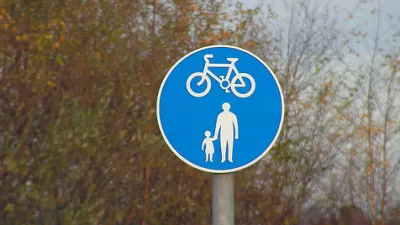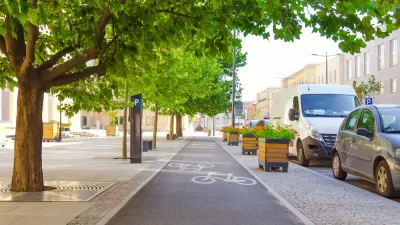An equity strategist offers advice on creating safe streets programs that address systemic racism.

Naomi Doerner, a consultant who helps bike and pedestrian advocates develop racial justice plans, gives Streetsblog her take on the blind spots in the planning community.
After addressing organizational culture and community outreach, Doerner points to Vision Zero as an example of a campaign hampered by a failure to analyze its relationship to systemic racism.
While its goal of eliminating traffic deaths is unassailable, Doerner suggests that the Vision Zero campaign has been implemented in a "top-down" manner that relies too much on police enforcement.
The problem, she says, is that the impacts of heavier policing are felt profoundly differently across socially disparate communities—and don't necessarily result in improved safety:
When you look at what is happening in communities of color in cities where we have this broken windows policing and you overlay this Vision Zero enforcement, there are concerns that it could lead to this kind of profiling or traffic stops.
Police are more likely to stop black and Latino drivers for minor infractions, Streetsblog points out; more troublingly, a recent study found this to be an important factor in the disproportionately high number of police killings of black and Latino people.
"This particular Vision Zero analysis had not been done by the advocacy community," Doerner notes. She continues:
I think that a lot of that really does have to do with the fact that a lot of the organized bike and walk community are not comprised of people of color. There are a very high number of people of color who bike and walk. But generally, they’re not really helping shape policy or the campaigns.
It doesn’t mean that you throw out everything about Vision Zero. It just means we have to use analysis tools to figure out who could very well be negatively impacted and develop alternatives.
FULL STORY: Naomi Doerner on How Street Safety Advocates Can Support Racial Justice

Planetizen Federal Action Tracker
A weekly monitor of how Trump’s orders and actions are impacting planners and planning in America.

The Simple Legislative Tool Transforming Vacant Downtowns
In California, Michigan and Georgia, an easy win is bringing dollars — and delight — back to city centers.

San Francisco's School District Spent $105M To Build Affordable Housing for Teachers — And That's Just the Beginning
SFUSD joins a growing list of school districts using their land holdings to address housing affordability challenges faced by their own employees.

In More Metros Than You’d Think, Suburbs are Now More Expensive Than the City
If you're moving to the burbs to save on square footage, data shows you should think again.

The States Losing Rural Delivery Rooms at an Alarming Pace
In some states, as few as 9% of rural hospitals still deliver babies. As a result, rising pre-term births, no adequate pre-term care and "harrowing" close calls are a growing reality.

The Small South Asian Republic Going all in on EVs
Thanks to one simple policy change less than five years ago, 65% of new cars in this Himalayan country are now electric.
Urban Design for Planners 1: Software Tools
This six-course series explores essential urban design concepts using open source software and equips planners with the tools they need to participate fully in the urban design process.
Planning for Universal Design
Learn the tools for implementing Universal Design in planning regulations.
Smith Gee Studio
City of Charlotte
City of Camden Redevelopment Agency
City of Astoria
Transportation Research & Education Center (TREC) at Portland State University
US High Speed Rail Association
City of Camden Redevelopment Agency
Municipality of Princeton (NJ)





























